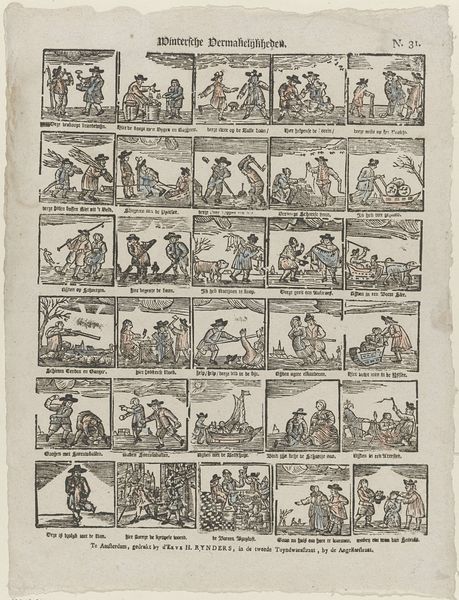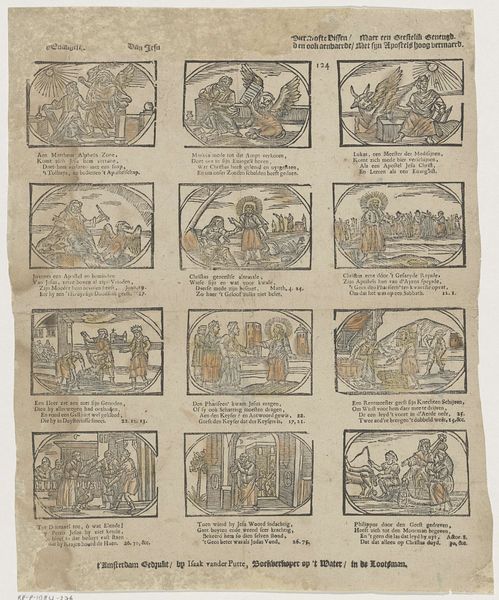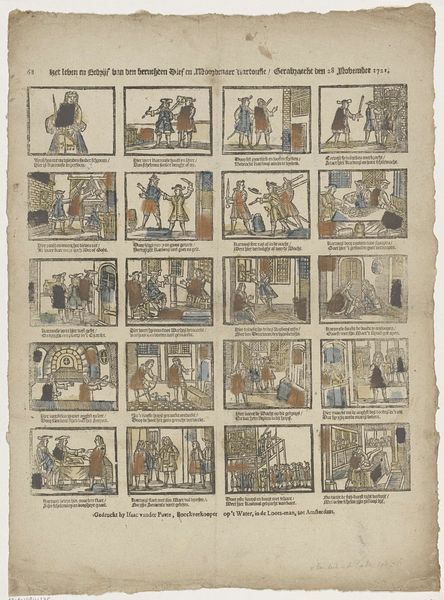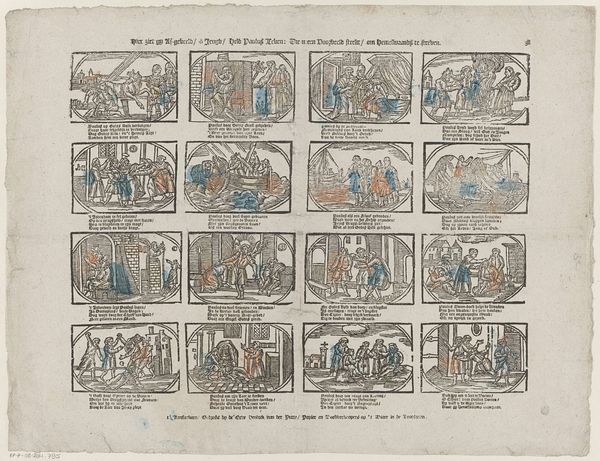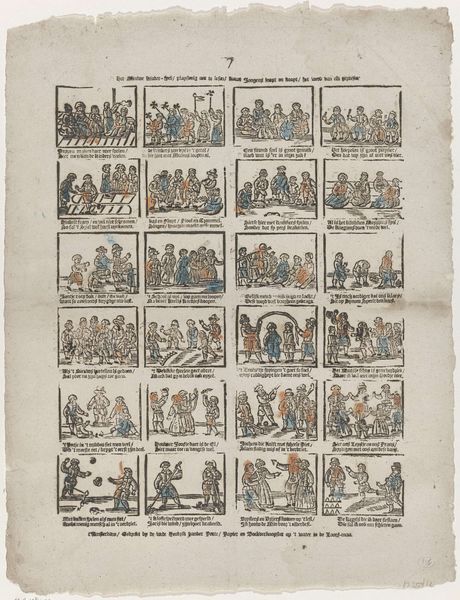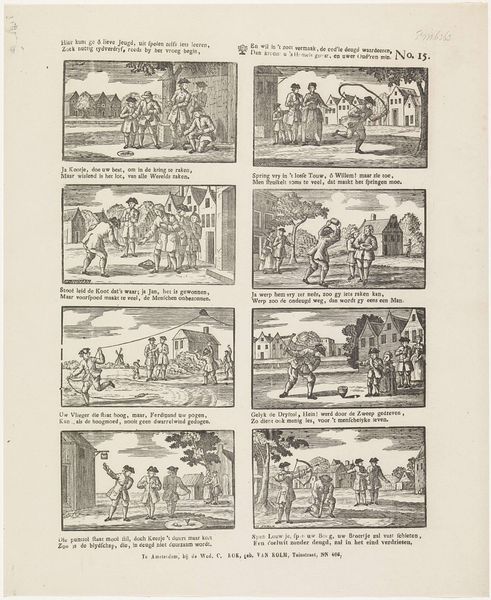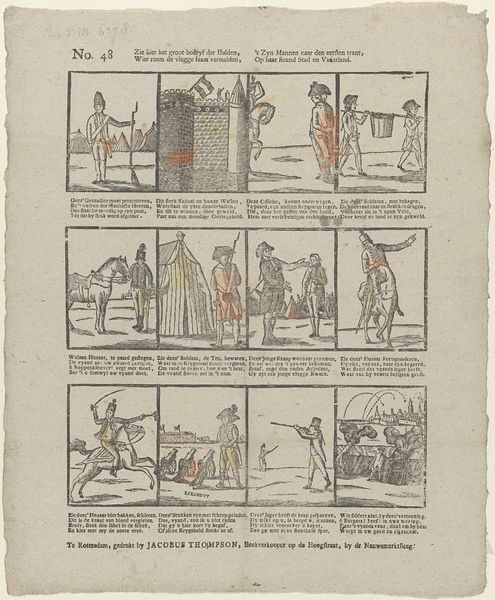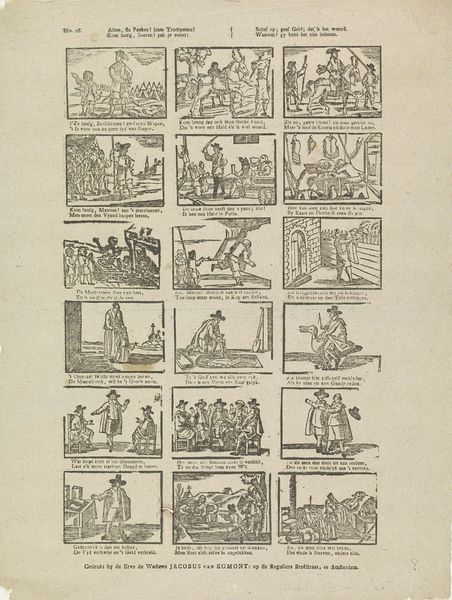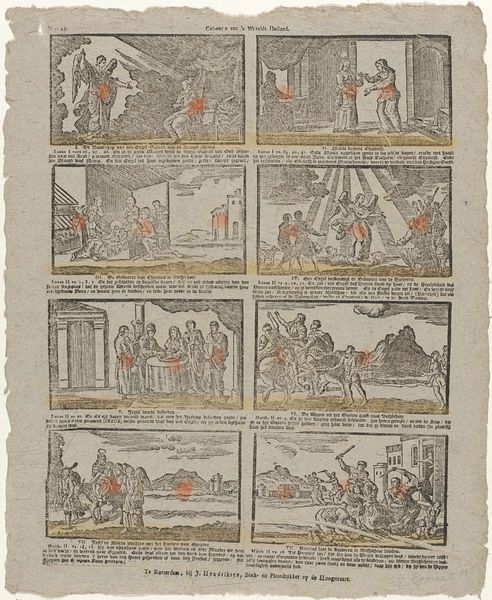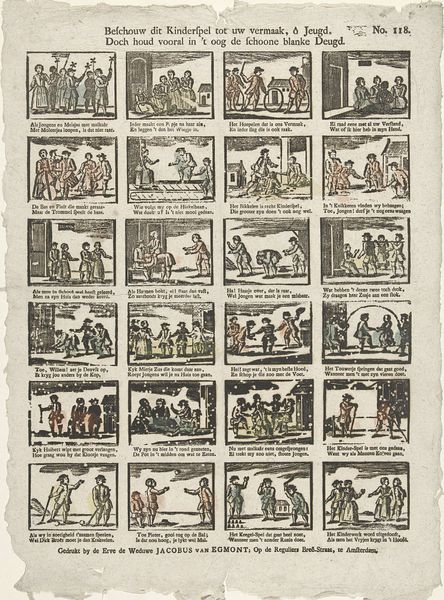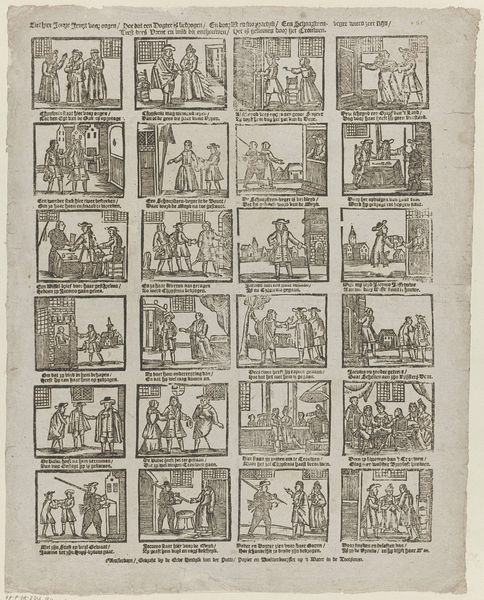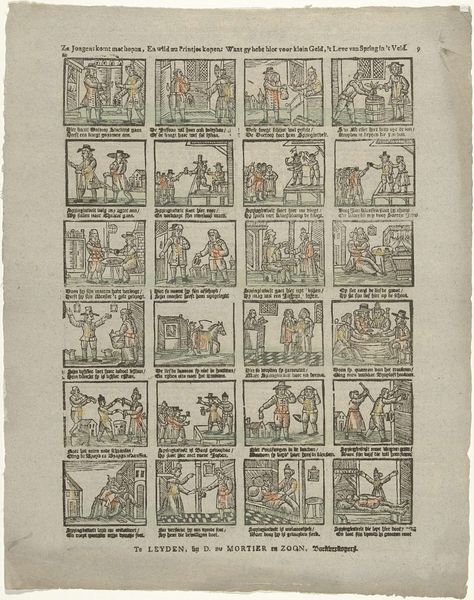
Kinders wilt dees printe leezen, En leert van jongs op kwaad doen vreezen 1753 - 1776
0:00
0:00
graphic-art, print, engraving
#
graphic-art
#
narrative-art
#
dutch-golden-age
# print
#
genre-painting
#
engraving
Dimensions: height 426 mm, width 313 mm
Copyright: Rijks Museum: Open Domain
Curator: Looking at this print, "Kinders wilt dees printe leezen, En leert van jongs op kwaad doen vreezen," which roughly translates to "Children should read this print, and learn from a young age to fear evil," it's immediately striking how direct the messaging is for children. Created sometime between 1753 and 1776, this engraving by Dirk Kemink offers a glimpse into 18th-century Dutch pedagogy. Editor: The first thing that stands out to me is the stark, cautionary mood. The compartmentalized images, each illustrating different transgressions and their punishments, feels a bit like a chilling board game of moral consequences. It really highlights the societal anxieties surrounding childhood and moral development. Curator: Precisely. Think about the socio-political context: the Dutch Golden Age has passed its peak, and anxieties about social order and individual behavior were quite prevalent. Prints like these served as visual tools to socialize children into the accepted norms and values, reinforcing a rigid moral code that emphasizes fearing transgression over internalizing ethics. It highlights the power dynamics at play within families and the broader community. Editor: The choice of scenes is so interesting, too. I notice, for example, that certain vignettes seem to showcase activities typically associated with boyhood - mischief-making, playing, testing boundaries, almost anticipating future political engagements in adulthood but within controlled ethical scenarios. We might interpret this focus as attempting to mold not only dutiful subjects but future patriarchal members of society, right? Curator: That's a crucial insight. The imagery reinforces the existing power structures. We're dealing with very early understandings of crime and punishment in children, not exactly in a progressive format! Furthermore, it serves as a tool, like all cultural production, to ensure community continuity in uncertain economic and political times. Editor: Absolutely. Seeing them presented in this almost playful yet clearly moralistic manner raises so many questions about the experience of childhood. It’s hard to reconcile that the visual narrative, albeit limited in medium, serves an instrumental social purpose. I feel saddened in imagining the actual young viewers presented with such austere perspectives early in life. Curator: Ultimately, this piece encourages a critical examination of power dynamics embedded within art production as cultural reinforcement. I also ponder to what degree the work normalizes institutional forms of punishment? How impressionable youth, seeing authority exercised through control, come to recognize authority? Editor: It does push one to reflect on how these didactic images reflect prevailing power structure then. We should be continually looking at this print within such intersecting lenses of power relations.
Comments
No comments
Be the first to comment and join the conversation on the ultimate creative platform.
